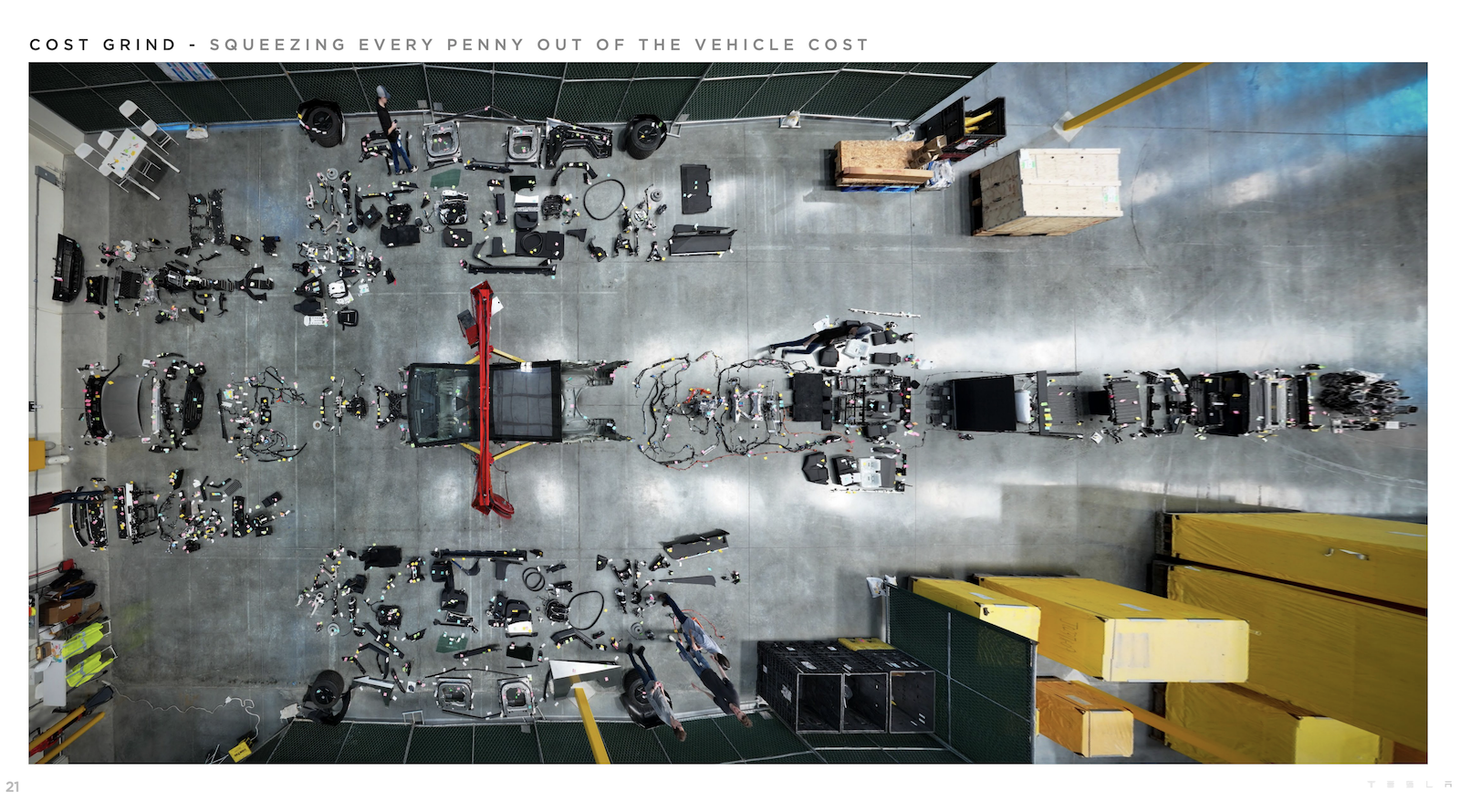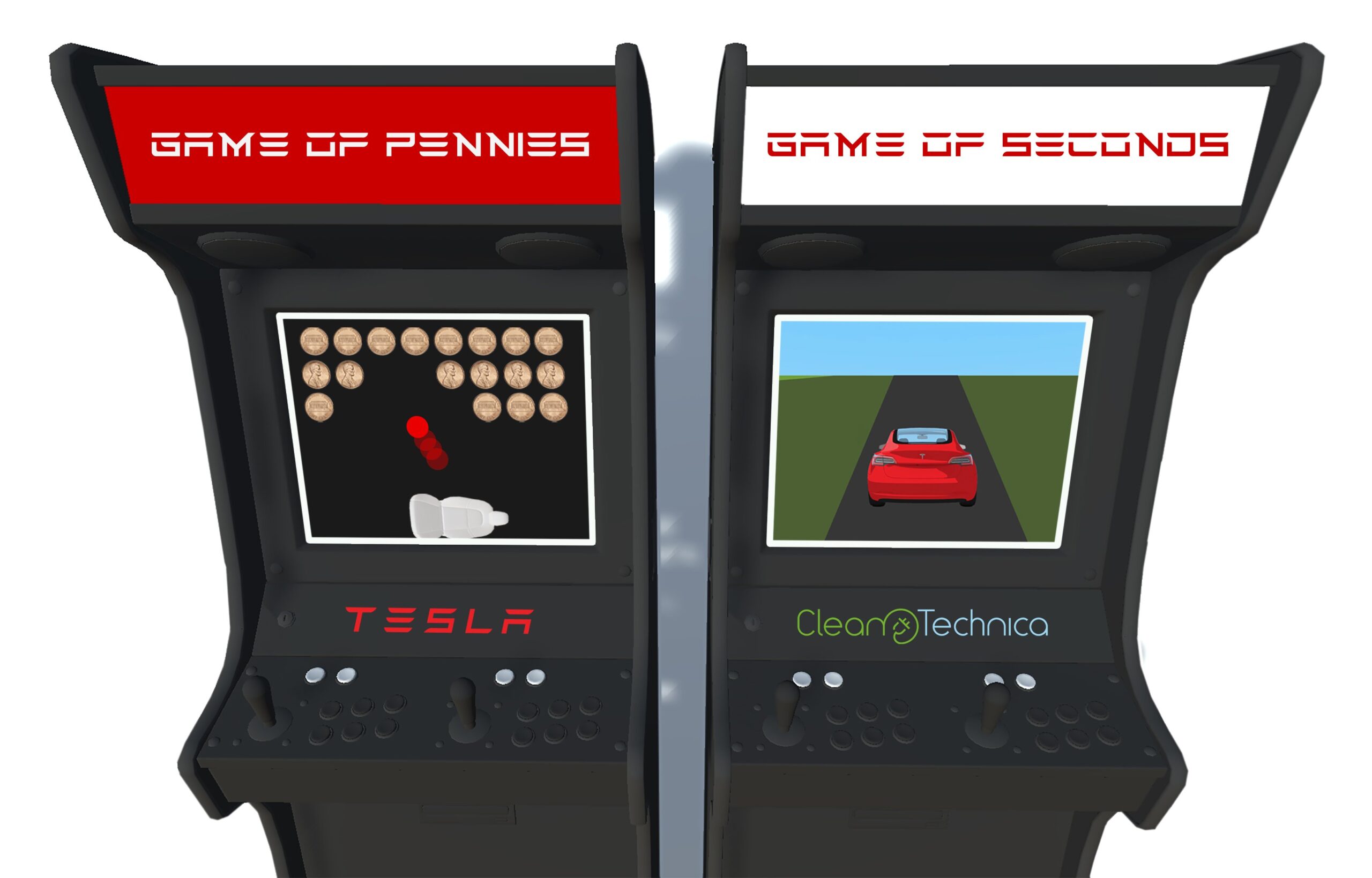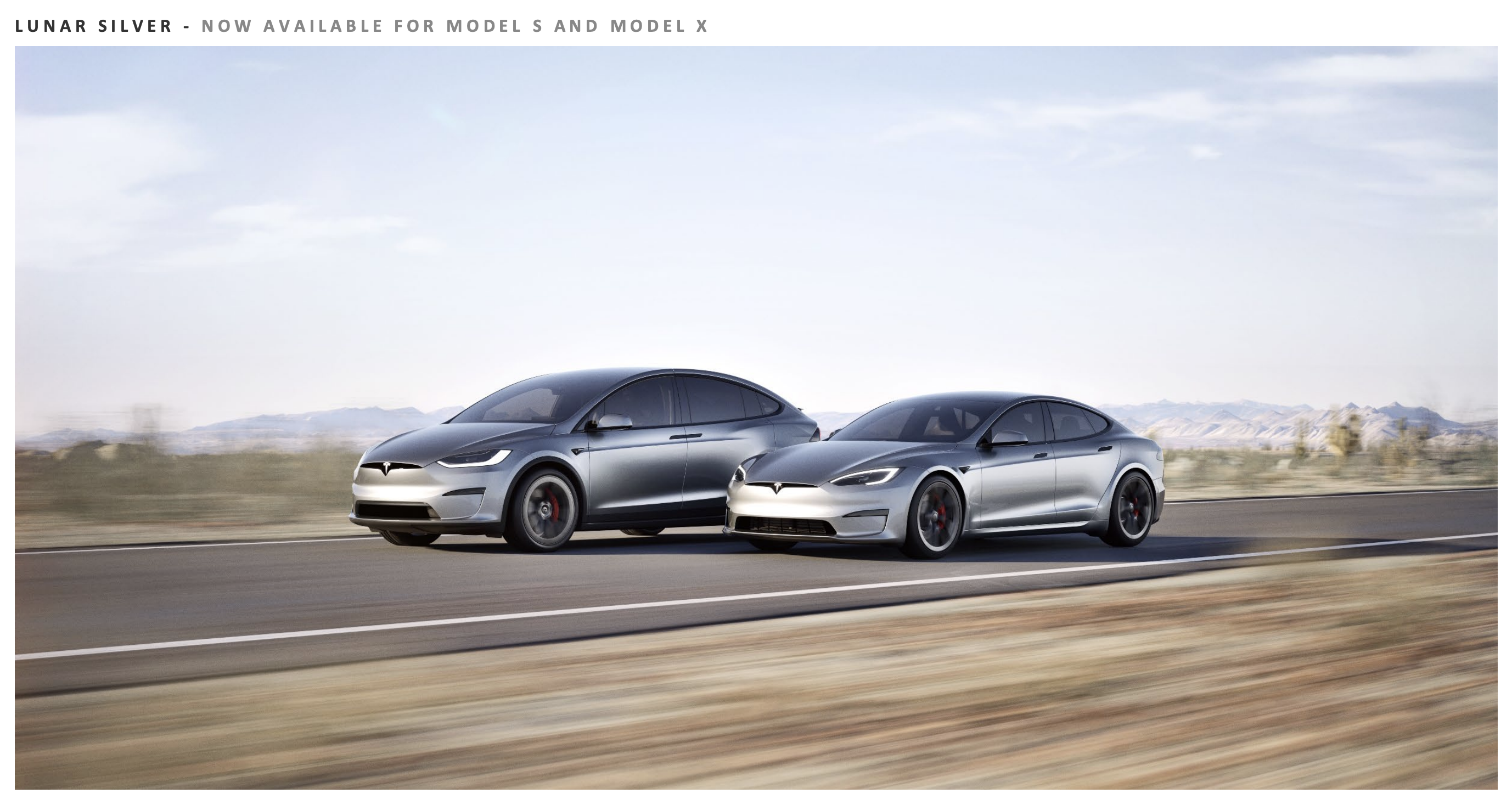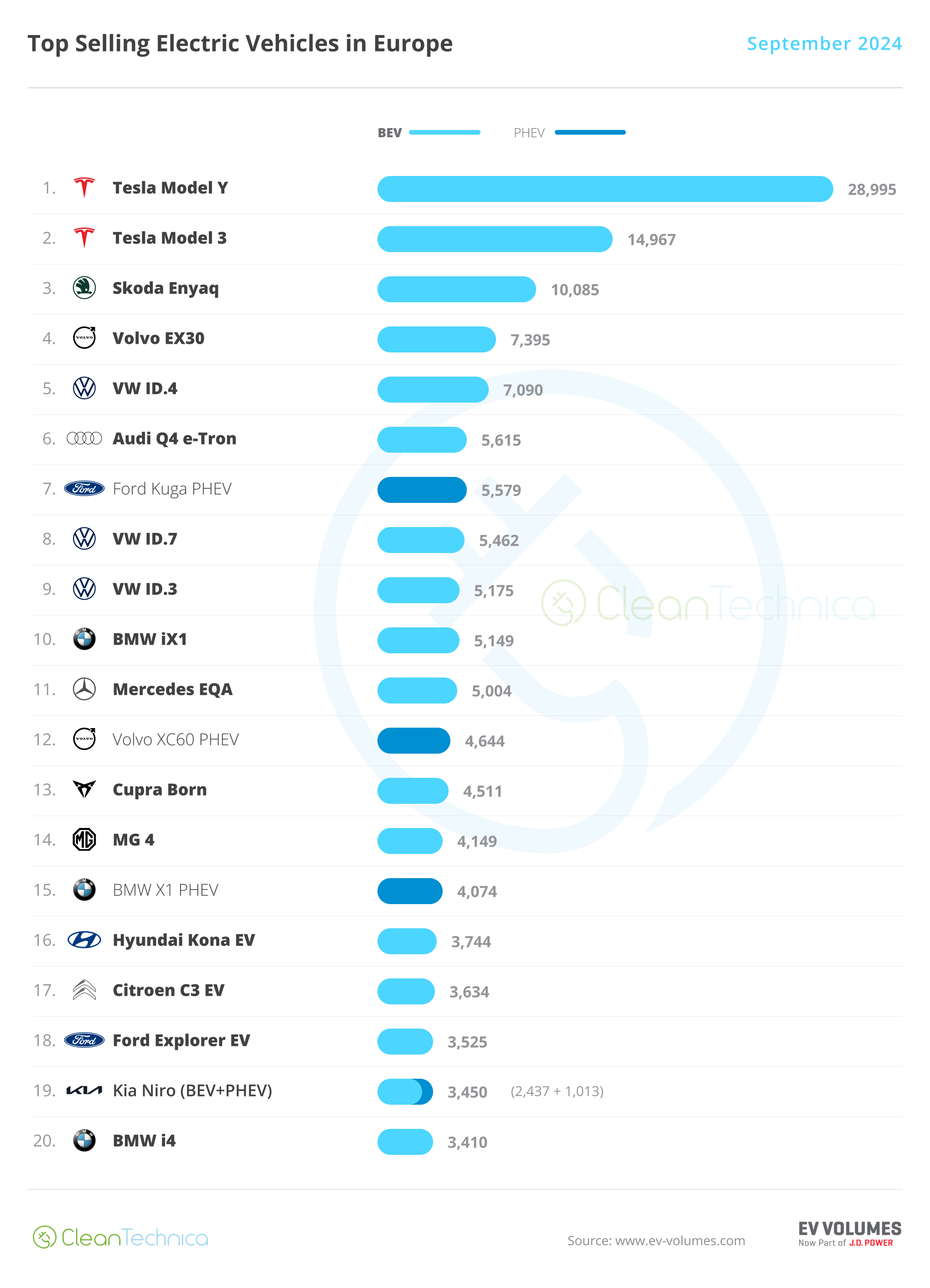Sign up for daily news updates from CleanTechnica on email. Or follow us on Google News!
Despite a lot of confusion on this matter in the past year or so, Tesla reaffirmed in its 3rd quarter shareholder letter and on its shareholder conference call today that the company is still working hard on cheaper electric car models and plans to begin their market launch next year.
“Preparations remain underway for our offering of new vehicles — including more affordable models — which we will begin launching in the first half of 2025,” Tesla writes in its shareholder letter. However, a key component was noted just before that line as well. “Our cost of goods sold (COGS) per vehicle came down to its lowest level ever at ~$35,100,” Tesla stated. As the company gets those COGS down more and more, it becomes that much easier to produce and sell a lower-cost Tesla. Naturally, making a model that’s smaller, has less advanced tech, and has some cheaper components then get the cost lower and get us into a territory where a model can be offered at a lower price.
Interestingly, Tesla also emphasized the importance of bringing down cost of ownership in order to lower transportation costs for people — but it’s not entirely clear what that’s getting at. “In order to continue accelerating the world’s transition to sustainable energy, we need to make EVs affordable for everyone, including making total cost of ownership per mile competitive with all forms of transportation.” It sort of seems like Tesla is aiming at its robotaxi/Cybercab dreams with that line, but using the term “cost of ownership” confuses me if that’s the case — unless the implication is that someone can own a Cybercab for their own use and also make some money on it in order to bring total cost of ownership down. Perhaps that’s the key point, but if so, it’s just another asterisk on the claims 5+ years ago that my (and your?) Tesla Model 3 would appreciate in value. However, if Tesla isn’t subtly bringing the Cybercab into the discussion there, I’m curious what Tesla means when it’s discussing bringing total cost of ownership down for EV buyers.
Much further along in the slidedeck, here’s a critical line on vehicle efficiency: “Cybercab will be built on our next-generation platform which includes a new powertrain with an estimated 5.5 mi/kWh. This will be our most efficient powertrain yet.” Naturally, a more efficient powertrain means spending less money on electricity — electricity is already so much cheaper than gas, so I’m not sure how this would lower monthly costs for a normal vehicle owner, but it clearly adds up for anyone, and more so for people (like taxi owners) whose cars drive a lot of miles. More importantly, perhaps, it lowers the size and cost of the battery to achieve the same driving range on a full charge.
Getting back to the big headline of the day, however, Tesla added a bit more info on its coming cheaper models. Here’s that section:
“Plans for new vehicles, including more affordable models, remain on track for start of production in the first half of 2025. These vehicles will utilize aspects of the next generation platform as well as aspects of our current platforms and will be able to be produced on the same manufacturing lines as our current vehicle line-up.
“This approach will result in achieving less cost reduction than previously expected but enables us to prudently grow our vehicle volumes in a more capex efficient manner during uncertain times. This should help us fully utilize our current expected maximum capacity of close to three million vehicles, enabling more than 50% growth over 2023 production before investing in new manufacturing lines.
“Our purpose-built Robotaxi product will continue to pursue a revolutionary ‘unboxed’ manufacturing strategy.”
There are a few things I want to highlight here. First of all, more affordable models are coming! This is what everyone’s been asking for, and many have been concerned was a dead plan. So, good news there! Secondly, start of production in first half of 2025 is a good timeline. We’re getting closer. Thirdly, yes, these are a mixture of the Cybercab platform as well as the Model 3 and Model Y platform and components. That seems clever and logical. Good news. Even better: these models will be built on the same manufacturing lines as the Model 3 and Model Y. Fourthly, they acknowledge that they don’t seem to be bringing down costs with this approach as they had initially hoped and guided. What that tells me is there won’t be a $25,000 Tesla car. So, perhaps the starting price will be $30,000? Perhaps that’s also why Tesla was starting to emphasize total cost of ownership more higher up in the slidedeck? In any case, a cheaper model or two is a good thing, so let’s just celebrate that’s still in the plans and reportedly on track.


The last point to highlight from that section and add to is that Tesla notes these new models will help the company fully utilitize their existing production lines. In other words, this is confirming that Tesla simply doesn’t have enough consumer demand for the Model 3 and Model Y to fully use the production lines that have been set up for them. Model 3 and Model Y sales growth does not seem to have reached the level Tesla had hoped and expected they’d reach. These are still extremely high selling, popular vehicles, but I think this is finally an acknowledgement that Tesla consumer demand growth slowed down much more than Musk and Tesla expected it would and is lower than current production capacity was built for. Tesla sales growth has more or less stalled, and while many Tesla fans have said that’s not true, that the company is production constrained, Tesla is making it clear here that it’s not production constrained — and, in fact, new models are needed in order to maximize the use of existing production capacity. Well, at least it’s finally been said and we can point to this as Tesla confirming it. And, of course, it’s not the worst thing in the world — Tesla is still selling plenty of vehicles, making a lot of revenue, and banking healthy profits! It’s just not achieving (not even close) the 50% annual growth rate Elon Musk long guided. The hope next year, according to Musk, after a year of stagnation, is 20–30% vehicle sales growth. We shall see if that is what it is.

One final note since I don’t know if I’ll be able to fit it in anywhere else, in the shareholder slidedeck, the company stated, “We continued to add to our vehicle lineup by expanding the options for new vehicle trims and paint for Model 3 and Model Y.” Tesla gets a lot of criticism for not rolling out enough new models while its competitors — especially in China, but also in Europe — introduce new model after new model and have an array of different model choices. That line makes me think Elon Musk’s response to that criticism, to some extent, is to say that they’ve been offering more trims and colors — which is a bit humorous and of course something that other automakers do as well as introducing new body types and sizes of vehicles. However, at last, it seems like 2025 should bring us a new Tesla model, or more than one, to gaze at and talk about.
Chip in a few dollars a month to help support independent cleantech coverage that helps to accelerate the cleantech revolution!
Have a tip for CleanTechnica? Want to advertise? Want to suggest a guest for our CleanTech Talk podcast? Contact us here.
Sign up for our daily newsletter for 15 new cleantech stories a day. Or sign up for our weekly one if daily is too frequent.
CleanTechnica uses affiliate links. See our policy here.
CleanTechnica’s Comment Policy



